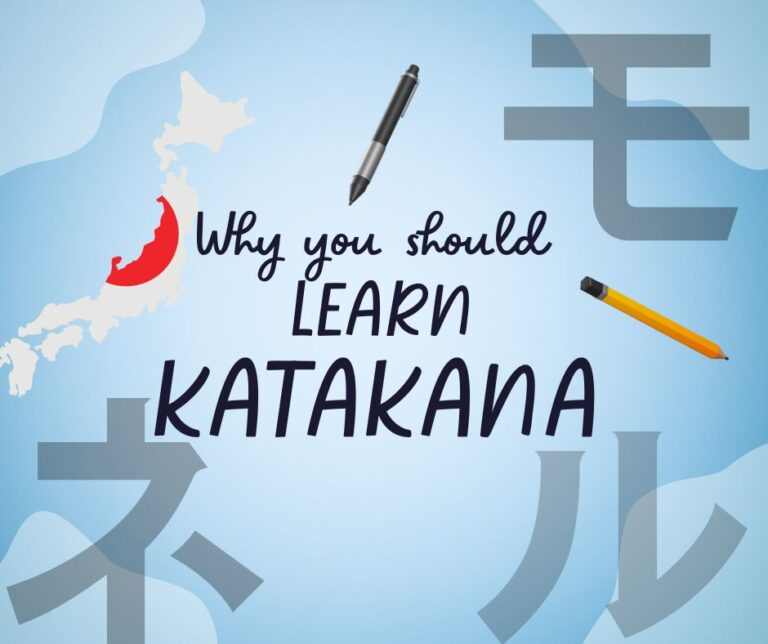The Japanese language has three different alphabets – katakana, hiragana and kanji. They are each used for different things and are all important to learn. Out of the three, the one most often overlooked is katakana.
The katakana alphabet consists of 46 characters which each represent a syllable or vowel, with the exception of the character “n” which is a letter of its own.
You should memorize these 46 symbols, as well the extra syllables which can be formed by adding a circle or two lines to the top right corner (for example TA becomes DA).
Why should you learn katakana ASAP?
Katakana is mostly used for writing loan words that originate in other languages, or names and places which do not have a kanji form. This is why katakana is so useful. It is also needed for those studying for the JLPT N5.
Once you can read katakana, you will already be able to understand many things as many of the words sound just like English. For example – チョコレートis cho-ko-re-tto, can you guess what that means? If you guessed chocolate, you are correct. And there are so many loan words in the Japanese language.
Many menus in restaurants have dishes, foods and ingredients written in katakana. If you learn katakana you’ll be able to read the menu, like this – “コカコーラ” is ko-ka-koo-ra. Say it aloud and it sounds like what it is, coca cola. When learning katakana, make sure to learn the correct pronunciation as well, as sometimes you need to sound out the word a few times to understand what it is. Like in the case of “ニュージーランド” – nyu-ji-rando, which is New Zealand but not completely obvious unless you sound it out properly.
How can you learn katakana?
There are many apps that you can play on your phone to learn on the go, while commuting or sitting in a café. Just search for “katakana” on your app store and try a few. You can also try the more old-school method of making flashcards, which has the added bonus that you have to practice writing them as well.
Also, many bookshops or 100-yen stores sell katakana practice books designed for kids, which are just as helpful for us Japanese learners. If you need some help mastering pronunciation or remembering the kana, TLS has a course designed specifically for katakana which can help you https://toranomon-ls.com/hiragana-katakana-kanji/.
What can you read once you know katakana?
- コーヒー coffee
- ホテル hotel
- ライト light
- テレビ television
- ゴルフ golf
- クリスマス christmas
- ペン pen
- ラジオ radio
- フライドポテト french fries
- ピザ pizza
- ハンバーガー hamburger
- チョコレート chocolate
- バター butter
- カレー curry
- アイスクリーム ice cream
- ケーキ cake
- サンドイッチ sandwich
- チーズ cheese
- スパゲッティ spaghetti
- アメリカ America
- スーパーマーケット supermarket
- コンビニ convenience store
- レストラン restaurant
- アパート apartment
- カレンダー calendar
- テニス tennis
- プール pool
- タクシー taxi
- バス bus
- カメラ camera
- スプーン spoon
- ドア door
- ペット pet
- ボタン button
- ツアー tour
- アルコール alcohol
- グラス glass
- ゼロ zero
- トイレ toilet
- スポーツ sports
How many could you read?
There are many more katakana words based on English. The sooner you learn, the sooner you can understand what you see around you! And if you are studying for the JLPT then you will need to know katakana for the N5 test.

